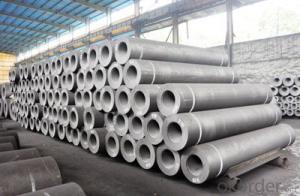Artificial graphite electrodes have been making waves in the world of energy storage. They’re not just a new frontier; they’re a game-changer. Imagine a future where our devices last longer, our electric cars can travel further, and our renewable energy systems are more efficient. That’s the promise of artificial graphite electrodes, and it’s not just a distant dream – it’s a reality that’s quickly becoming a part of our everyday lives.
I remember the first time I heard about artificial graphite electrodes. I was at a conference, listening to a panel of experts discuss the latest advancements in battery technology. One of the speakers mentioned this new material, and I was immediately intrigued. I had always been fascinated by the idea of improving energy storage, and this seemed like a major breakthrough.
So, what exactly are artificial graphite electrodes? To put it simply, they’re synthetically produced graphite materials that serve as the positive electrode in lithium-ion batteries. But don’t let the simplicity of that definition fool you – there’s a lot more to these electrodes than meets the eye.
One of the key benefits of artificial graphite electrodes is their high energy density. This means that they can store more energy in a smaller space, which is a huge advantage for devices that need to be compact and lightweight. Think about smartphones, laptops, and even wearable technology – all of these could benefit from the increased energy capacity provided by these electrodes.
Another advantage is their long cycle life. Traditional battery materials tend to degrade over time, losing their ability to hold a charge. But with artificial graphite electrodes, the degradation rate is significantly slower, which means that batteries can last longer without needing to be replaced. This is not only good for the environment, but it’s also a cost-saving benefit for consumers.
But it’s not just about the individual components. When it comes to renewable energy systems, artificial graphite electrodes can play a crucial role in making these systems more efficient. By storing energy more effectively, we can reduce the need for backup power sources and ensure that renewable energy is used to its fullest potential.
Now, I know what you might be thinking – all of this sounds great, but what about the cost? Well, let me tell you, the cost of producing artificial graphite electrodes is dropping rapidly. As more companies invest in the research and development of this technology, the economies of scale are kicking in, making it more affordable for everyone.
And the applications are endless. From consumer electronics to large-scale energy storage systems, artificial graphite electrodes have the potential to revolutionize the way we use and store energy. I can already envision a world where our homes are powered by solar panels, with artificial graphite batteries storing the energy for use during the night or on cloudy days.
But it’s not just about the future. The impact of artificial graphite electrodes is being felt right now. Companies are already incorporating this technology into their products, and the results are impressive. I’ve seen firsthand the difference it can make in the performance of electric vehicles, with longer ranges and faster charging times.
So, what does this mean for us? It means that we’re on the cusp of a new era in energy storage. We’re moving away from the limitations of traditional materials and embracing a future where energy is more accessible, more efficient, and more sustainable.
As someone who’s passionate about technology and its potential to improve our lives, I can’t help but feel excited about the possibilities that artificial graphite electrodes offer. It’s not just about the technical advancements; it’s about the real-world applications and the positive impact they can have on our daily lives.
In conclusion, artificial graphite electrodes are more than just a new frontier in battery technology. They represent a shift in the way we think about and utilize energy. As we continue to innovate and push the boundaries of what’s possible, I have no doubt that artificial graphite electrodes will play a pivotal role in shaping our energy future.

